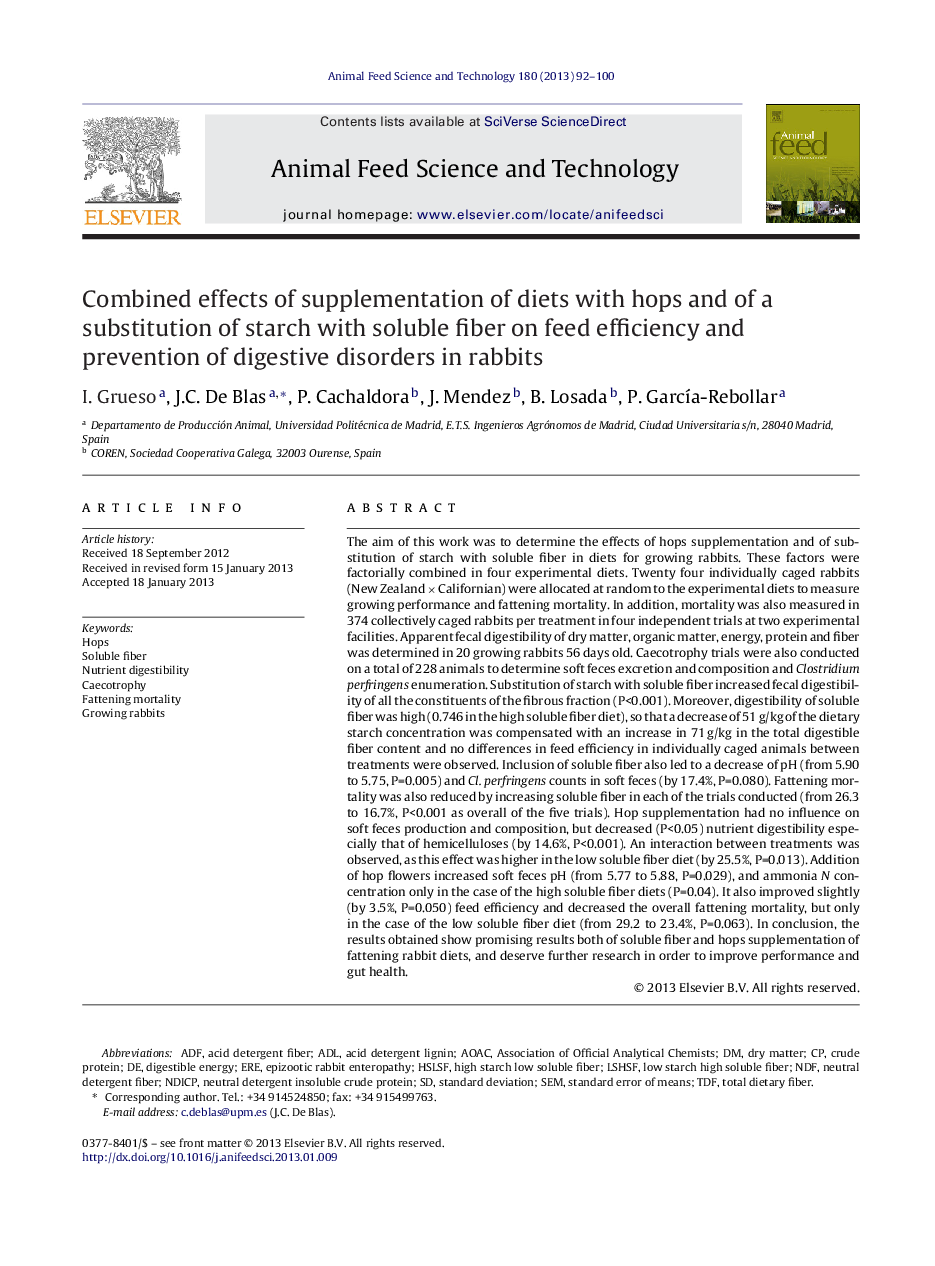| Article ID | Journal | Published Year | Pages | File Type |
|---|---|---|---|---|
| 8491996 | Animal Feed Science and Technology | 2013 | 9 Pages |
Abstract
The aim of this work was to determine the effects of hops supplementation and of substitution of starch with soluble fiber in diets for growing rabbits. These factors were factorially combined in four experimental diets. Twenty four individually caged rabbits (New Zealand Ã Californian) were allocated at random to the experimental diets to measure growing performance and fattening mortality. In addition, mortality was also measured in 374 collectively caged rabbits per treatment in four independent trials at two experimental facilities. Apparent fecal digestibility of dry matter, organic matter, energy, protein and fiber was determined in 20 growing rabbits 56 days old. Caecotrophy trials were also conducted on a total of 228 animals to determine soft feces excretion and composition and Clostridium perfringens enumeration. Substitution of starch with soluble fiber increased fecal digestibility of all the constituents of the fibrous fraction (P<0.001). Moreover, digestibility of soluble fiber was high (0.746 in the high soluble fiber diet), so that a decrease of 51 g/kg of the dietary starch concentration was compensated with an increase in 71 g/kg in the total digestible fiber content and no differences in feed efficiency in individually caged animals between treatments were observed. Inclusion of soluble fiber also led to a decrease of pH (from 5.90 to 5.75, P=0.005) and Cl. perfringens counts in soft feces (by 17.4%, P=0.080). Fattening mortality was also reduced by increasing soluble fiber in each of the trials conducted (from 26.3 to 16.7%, P<0.001 as overall of the five trials). Hop supplementation had no influence on soft feces production and composition, but decreased (P<0.05) nutrient digestibility especially that of hemicelluloses (by 14.6%, P<0.001). An interaction between treatments was observed, as this effect was higher in the low soluble fiber diet (by 25.5%, P=0.013). Addition of hop flowers increased soft feces pH (from 5.77 to 5.88, P=0.029), and ammonia N concentration only in the case of the high soluble fiber diets (P=0.04). It also improved slightly (by 3.5%, P=0.050) feed efficiency and decreased the overall fattening mortality, but only in the case of the low soluble fiber diet (from 29.2 to 23.4%, P=0.063). In conclusion, the results obtained show promising results both of soluble fiber and hops supplementation of fattening rabbit diets, and deserve further research in order to improve performance and gut health.
Keywords
ADLNDICPCaecotrophyNDFADFEREAOACTDFacid detergent fiberEpizootic Rabbit Enteropathyassociation of official analytical chemistsstandard deviationDigestible energystandard error of meansGrowing rabbitsSoluble fiberneutral detergent fiberacid detergent lignindry matterSEMHopsNutrient digestibilitycrude proteinneutral detergent insoluble crude proteinTotal dietary fiber
Related Topics
Life Sciences
Agricultural and Biological Sciences
Animal Science and Zoology
Authors
I. Grueso, J.C. De Blas, P. Cachaldora, J. Mendez, B. Losada, P. GarcÃa-Rebollar,
